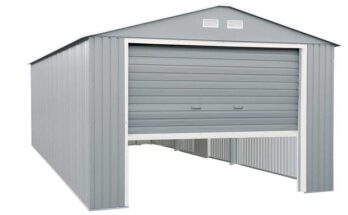The main job of a roof is to keep us safe from weather. If a roof isn’t built well, it might leak when it rains or let in cold air during winter. A strong roof keeps the house cozy and dry. A poorly constructed roof can be dangerous. It might collapse if it’s not sturdy, especially under heavy snow or strong winds. Ensuring the roof is built correctly can prevent accidents and keep everyone safe.
Building a good roof means it will last longer. Nobody wants to deal with constant repairs or replacements. A well-made roof can last many years, giving you peace of mind and saving you money in the long run.
Must Dos for the Best Roofing During Construction
Choose the Right Materials
Picking the right materials for your residential roof installation services is like choosing the best ingredients for a cake. You want materials that are strong and durable. Here are some common roofing materials:
- Asphalt Shingles are popular because they’re affordable, come in many colors, and last about 2030 years.
- Metal roofs are very durable and can last up to 50 years. They’re also great for reflecting heat and keeping your home cooler.
- Tiles are beautiful and long-lasting, often up to 100 years! They’re perfect for warmer climates but can be heavy and expensive.
- Wood shingles are environmentally friendly and have a natural look. They last about 2530 years but need more maintenance to prevent mold and rot.
Ensure Proper Installation
Even the best materials won’t work well if installed incorrectly. It’s like building a toy with missing pieces—it just won’t hold up. Here are some tips:
- Ensure the people working on your roof are experienced and know what they’re doing. Look for licensed and insured contractors.
- Good ventilation helps your roof breathe and prevents moisture buildup, which can lead to mold and damage. Use Quality Underlayment: The underlayment is the layer between your roof deck and the shingles. It adds extra protection against water and can prevent leaks and damage.
Regular Inspections
Think of roof inspections like checkups at the doctor’s. They help catch small problems before they become big ones. Here’s what to do:
- Heavy rain, wind, or snow can damage your roof. After a big storm, it’s a good idea to check for missing shingles, leaks, or other damage.
- Even if there hasn’t been any severe weather, having your roof inspected once a year is wise. This can help spot wear and tear that might need fixing.
When It’s Time to Replace Your Roof
Even with the best care, every roof has a lifespan. Knowing when it’s time for roof replacement is important. If your roof is older than its expected lifespan, it might be time for a replacement, even if it looks good.
Shingles that are cracked, curled, or missing can mean your roof is failing. Sometimes, you can replace a few shingles, but widespread damage often means it’s time for a new roof. If you see water stains on your ceiling or walls, it’s a sign that your roof is leaking. Water damage can weaken your roof and cause serious problems if not addressed.
A roof that’s sagging is a big red flag. It usually means structural damage, and you should call a professional immediately.




